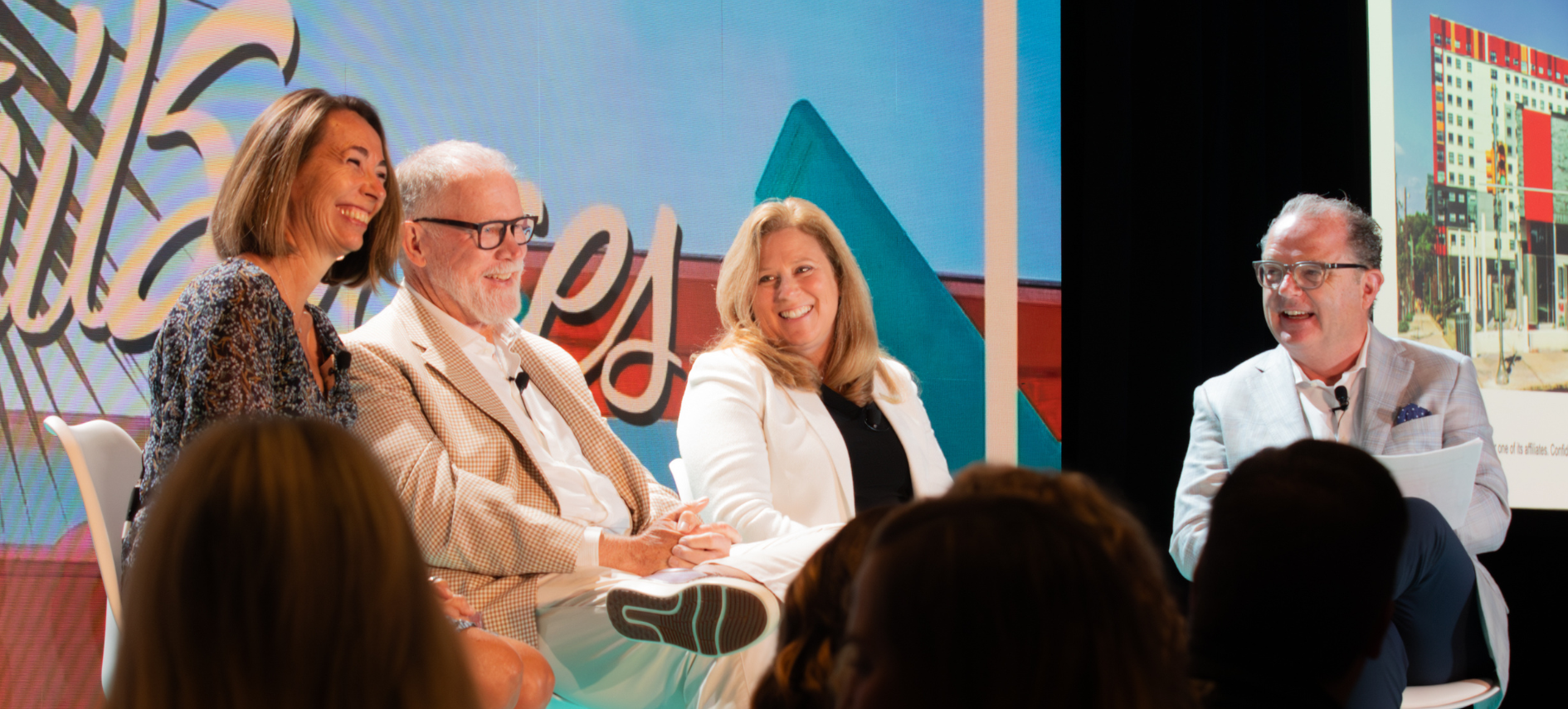LEGO is the world's number one love brand, a manufacturing powerhouse that dominates 120 countries. Yet for decades, they had a little secret: "We are a great manufacturer, but we really struggle as a retailer." At RetailSpaces, Global Retail Design Director PJ du Toit shared how admitting this painful truth became the foundation for revolutionizing retail design.
The Modular Mindset
Du Toit opened with a staggering statistic that reframes everything about retail flexibility: six LEGO bricks can create over 900 million different configurations. For the Global Retail Design Director, this isn't just a fun fact—it's a design philosophy that's transformed how LEGO approaches every aspect of their retail strategy.
"If we take that as a principle, as a mindset, as an opportunity," du Toit explained, "what kind of creations, adaptations, configurations can we create that could apply to retail design and storytelling?"
The answer has been a complete rethinking of static retail environments. Instead of fixed displays destined to look identical six months after opening, LEGO created fixture systems that behave like their famous bricks—endlessly reconfigurable, scalable, and built for adaptation.
Beyond the Box: Rethinking Retail Real Estate
For two decades, LEGO stores looked tired. Their retail identity was dated, drawn out, and failing to resonate with audiences who expected more. While LEGO dominated toy manufacturing, their stores felt like afterthoughts—static displays that couldn't keep pace with a brand built on infinite creativity.
The wake-up call sparked a complete reimagining. Instead of traditional retail thinking, LEGO applied their core product philosophy to store design itself. The breakthrough came from understanding that successful retail isn't about perfect execution—it's about creating systems flexible enough to evolve constantly.
LEGO's new approach prioritizes:
- Scalable fixtures that work across formats from mall kiosks to flagship destinations
- Generic systems that function globally while allowing local customization
- Practical materials built for longevity and safety, not just aesthetics
- Cross-functional integration where design, operations, and merchandising work as one system.

LEGO's Generic Store Design
The Experience-Commerce Tightrope
Here's where LEGO's genius really shines: they've mastered the art of making experiences sell without feeling salesy. "We are not a theme park, we're not somewhere where you just drop your kids off," du Toit emphasized. "But there is definitely a sense of how do we tie experience and tactility to product."
Walk into any LEGO store and you'll see this philosophy in action. Kids aren't just browsing—they're building, racing cars down ramps, posing with life-sized mini-figures, and creating models that become part of the store's architecture for the day. Every hands-on moment serves dual purposes: pure joy and subtle conversion.
The proof? During their Formula 1 pop-up in Shanghai, LEGO expected customers to grab small, portable sets. Instead, parents and kids hauled massive, expensive kits through crowded venues. The lesson: when experience authentically connects to product, price resistance melts away.
Localization at Global Scale
LEGO's approach to localization reveals sophisticated thinking that goes far beyond slapping local landmarks in windows. From Victorian-themed stairwells in Leicester Square to "City of Heroes" narratives in New York's Times Square, each store becomes a stage for local storytelling while maintaining unmistakable LEGO DNA.
_Store_Flagship_on_Fifth_Superheroes_002.jpeg?width=1000&height=667&name=The_LEGO(R)_Store_Flagship_on_Fifth_Superheroes_002.jpeg)
The LEGO Store in Times Square, New York
This isn't just creative indulgence—it's strategic survival. In markets where 45% of the product portfolio changes annually, stores need constant refresh capabilities built into their foundation. LEGO's modular systems make ongoing curation possible without costly redesigns, turning inevitable change from budget killer into competitive advantage.
Breaking the Traditional Retail Mold
LEGO's most audacious moves happen where toy stores have no business being. Their Formula 1 partnership isn't just brand extension—it's retail format revolution. Picture this: a Formula 1 track in Shanghai where customers convert every seven minutes, applying fast-food urgency to toy purchasing. The chaos was intentional, the results were staggering.
"We were selling out of half the portfolio in the first day," du Toit marveled. The activation proved that flexible systems enable rapid format adaptation, turning unconventional venues into conversion machines.
The Future Blueprint
Du Toit's presentation revealed something profound: in retail's age of uncertainty, the winners won't be those with the perfect strategy—they'll be those with infinitely adaptable systems. LEGO's transformation from manufacturing giant with retail struggles to experiential leader offers a masterclass in embracing change as competitive advantage.
The formula isn't about building with bricks—it's about building for endless reconfiguration. Create modular systems that evolve rather than expire. Balance experience with commerce authentically. Invest in cross-functional collaboration from day one. Most importantly, design for the 900 million configurations you haven't thought of yet.
In a retail landscape where flexibility determines survival, LEGO's approach might just be the blueprint every brand needs: not just to adapt to change, but to make change your greatest asset.
Watch the full talk below 👇
Posted by
Physical Retail Reimagined.
RetailSpaces is a community for store development and design innovators.
March 29-31, 2026 | San Antonio, TX
Learn More!







Comments